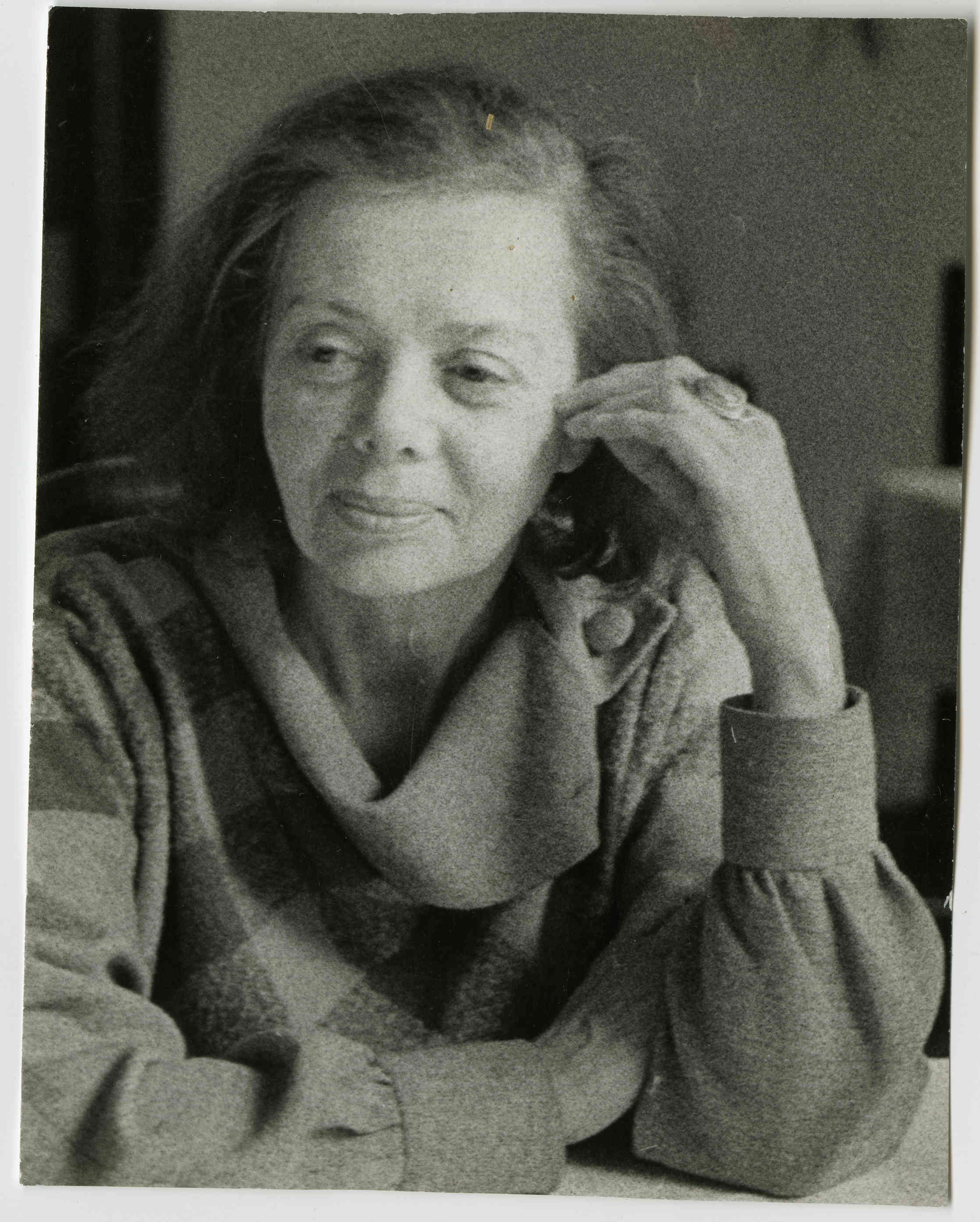
Dagmar Normet
Dagmar Normet (until 1940 Dagmar-Sarlia Rubinstein, Estonicised name Dagmar Randa, from 1945 Normet; 13. II 1921 – 16. X 2008) was a children’s author.
She was born and educated in Tallinn, then studied physical culture at the University of Tartu from 1940 to 1941; then, having fled from the war to the Soviet Union, studied Russian language and literature at the Ulyanovsk Pedagogical Institute, at the Higher Institute of Physical Culture in Moscow, and then again at the State University of Tartu, graduating in 1945 as a physical education instructor. She worked as a teacher of physical culture, and among other things she conducted the morning exercise programmes on Estonian Radio from 1946 to 1953. From 1956 onward she concentrated on writing. She was a member of the Estonian Theatre Association (from 1964) and the Writers’ Union (from 1988). She was awarded the Order of the White Star, Class V (2007). From 1945 to 1960 she was married to the composer Leo Normet (1922 – 1995). She died in Tallinn and is buried in the Metsakalmistu (‘Forest Cemetery’), Tallinn.
The first books by Normet, who came to children’s literature in the forties, were the verse stories Maalesõit (‘A Trip to the Country’, 1948) and Me ehitame maja (‘We’re Building a House’, 1957), and the books that won her wider recognition, Une-Mati, Päris-Mati ja Tups (‘Mati the Sandman, the Real Mati and Tups’, 1979) and Une-Mati rannakülas (‘Mati the Sandman at the Coastal Village’, 1986), which, typically for the author, intertwine elements of fairy-tale and fantasy with the everyday world, and, along with an adventure story, impart knowledge to children. So it is with the children’s novel Lõvi ja lohe (‘The Lion and the Dragon’, 1993), where the action moves from the present day to the Middle Ages. In Normet’s joyfully nuanced works, the characters often travel in space and time, learning from their immediate experience. Normet also wrote plays for children, radio plays, and scripts for television productions and puppet films; the plays for children are collected in Lavalood lastele (‘Stage Stories for Children’, 2008).
For adults Normet wrote opera libretti and film scripts, the best known of which is the classic Estonian comedy film Vallatud kurvid (‘Wild Curves’, 1959, directors Juli Kun, Kaljo Kiisk), for which she was one of the writers.
She wrote a monograph about the actor, director and costume artist Lo Tui (1973) and was one of the compilers of a collection about the legendary gymnastics teacher, Ernst Idla – võlur Tallinnast (‘Ernst Idla – the Magician from Tallinn’, 1991).
The books of memoirs Avanevad uksed (‘Opening Doors’, 2001) and …ainult võti taskus (‘…only a key in my pocket’, 2004) give an insight into the course of a life in which a childhood and youth passed in twenties in the Republic of Estonia were exchanged for the totally different world of the forties.
A. K. (Translated by C. M.)
Books in Estonian
Children’s literature
Maalesõit: matkimismäng lastele. Tallinn: Ilukirjandus ja Kunst, 1948, 16 lk. [2. trükk: 1949.]
Me ehitame maja. Tallinn: Eesti Riiklik Kirjastus, 1957, 12 lk.
Delfiinia: jutustus. Tallinn: Eesti Raamat, 1975, 84 lk. [2. trükk: 1993.]
Une-Mati, Päris-Mati ja Tups. Tallinn: Eesti Raamat, 1979, 111 lk. [Järgmised trükid: 1999, 2016.]
Kümme ust, ehk, Meie maja rahvas. Tallinn: Eesti Raamat, 1985, 64 lk.
Une-Mati rannakülas. Tallinn: Eesti Raamat, 1986, 143 lk. [Järgmised trükid: 1999, 2016.]
Naeratuste vikerkaar: jõulumuinasjutt. Rapla: Graafiline Produktsioon, 1992, 18 lk.
Lõvi ja lohe: lasteromaan. Tallinn: Koolibri, 1993, 174 lk.
Lavalood lastele. Tallinn: Varrak, 2008, 269 lk.
Memoirs
Avanevad uksed. Tallinn: D. Normet, 2001, 216 lk. [2. trükk: 2010.]
…ainult võti taskus. Tallinn: Varrak, 2004, 322 lk. [2. trükk: 2010.]
Miscellaneous
Lo Tui. Tallinn: Eesti Raamat, 1973, 40 lk.



